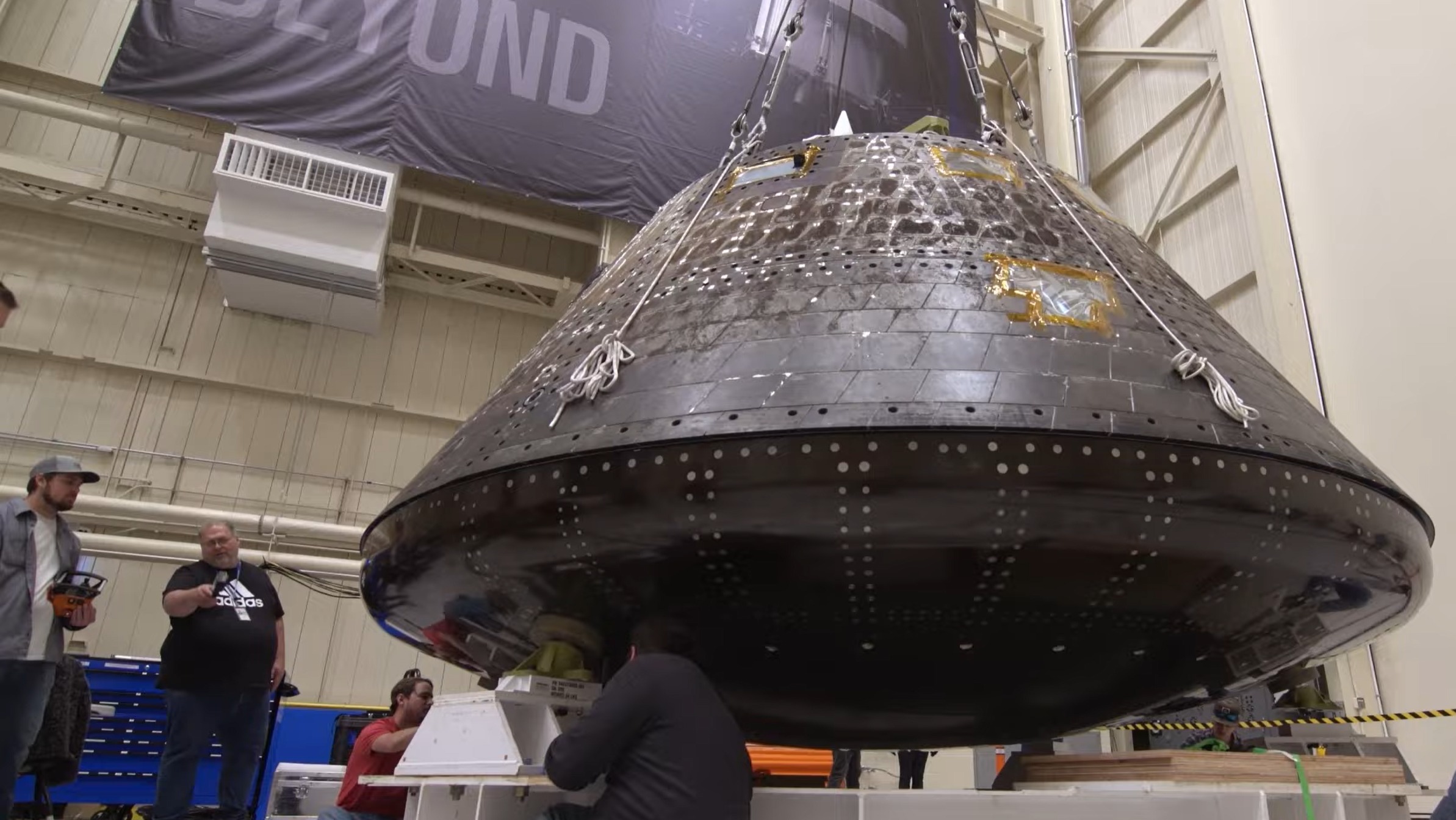After a successful moon voyage, NASA's Artemis 1 Orion spacecraft helps prepare for the next (video)
A spacecraft that visited the moon is being tested now to help astronauts on the next lunar mission.
The Orion spacecraft for Artemis 1, which circled the moon with mannequins and science experiments in 2022, just touched down in Ohio for eight months of testing before humans climb on board future versions of the spacecraft, NASA officials stated in a statement on March 6.
Artemis 2 will bring four astronauts around the moon no earlier than September 2025. The next mission, Artemis 3, is scheduled to bring astronauts to the lunar surface no earlier than 2026 on SpaceX's Starship, following a journey to lunar aboard Orion. (Both Artemis 2 and Artemis 3 were delayed in January due to several technical issues.)
Related: Astronauts won't walk on the moon until 2026 after NASA delays next 2 Artemis missions
Artemis 1's Orion, now known as the Orion Environmental Test Article, will be put through its paces at NASA's Neil Armstrong Test Facility in Sandusky "to ensure Orion is ready to protect the crew if an emergency occurs during launch," NASA officials added.
"Engineers and technicians from NASA and Lockheed Martin will subject the test article to the extreme conditions Orion may experience during a launch abort scenario," NASA stated.
"The lengthy test campaign includes simulated lightning strikes and abort-level acoustics reaching levels of more than 160 decibels, louder than a jackhammer. It also includes deployments of the spacecraft's docking and shielding covers and its crew module uprighting system, (which are) five airbags on top of the capsule that inflate upon splashdown."
Breaking space news, the latest updates on rocket launches, skywatching events and more!
Artemis 1's Orion already went through months of space environment testing in 2019 and 2020 to prepare for space, NASA stated, but this time the emphasis is ensuring it can protect the crew on board.
The four Artemis 2 astronauts are NASA commander Reid Wiseman, NASA pilot Victor Glover (who will become the first Black person to leave low Earth orbit, or LEO), NASA mission specialist Christina Koch (the first woman to go beyond LEO) and Canadian Space Agency mission specialist Jeremy Hansen (the first non-American).
The Artemis missions are part of the greater Artemis program that aims to put a settlement at the moon's south pole, nearby water ice resources, along with a NASA-led space station called Gateway. The NASA-led Artemis Accords task all of its 35 signatories with following U.S.-led peaceful space exploration norms. A subset of those countries, like Canada, provide hardware for moon missions.

Elizabeth Howell (she/her), Ph.D., was a staff writer in the spaceflight channel between 2022 and 2024 specializing in Canadian space news. She was contributing writer for Space.com for 10 years from 2012 to 2024. Elizabeth's reporting includes multiple exclusives with the White House, leading world coverage about a lost-and-found space tomato on the International Space Station, witnessing five human spaceflight launches on two continents, flying parabolic, working inside a spacesuit, and participating in a simulated Mars mission. Her latest book, "Why Am I Taller?" (ECW Press, 2022) is co-written with astronaut Dave Williams.

